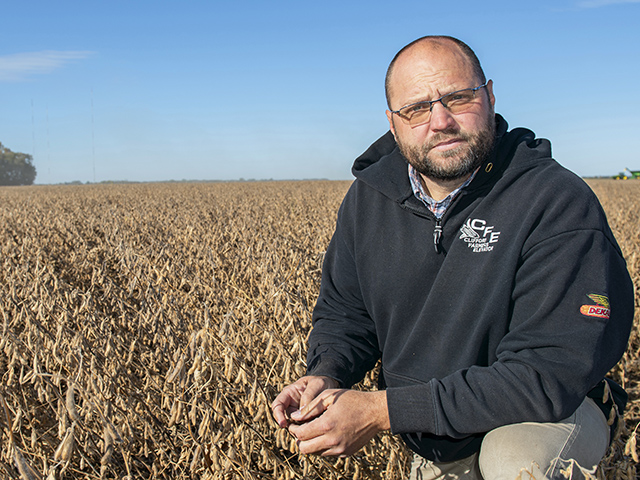Farm Math Gets Harder to Solve
Farm Strong - Farm Math Gets Harder to Solve
Profile: Joe Morken
-- Morken Farm
-- Casselton, North Dakota
-- Sugar Beets, Soybeans, Corn
One combine is what it takes to do the job at Morken Farm, so one combine is all there is for this 3,400-acre operation. Thinking about a second one just creates more questions than answers for Joe Morken.
"At what point do you get to where you need that second combine?" he asks. "If we pick up another quarter, do we need one? What happens when your only machine breaks down? A lot of the evaluations we do when we consider profitability are around maxing out equipment use."
Land availability plays a key role in that decision. Morken says they own about one-third of the land they work and rent the rest. "The competition for land here has gotten more intense," he says. "It all comes down to who is paying what for an acre of ground. Downturns in the market have flushed out some of those top-dollar renters in our area. Still, we are looking at a situation here where the average farm is bigger than it used to be, and we balance that desire to grow with the question of whether or not it makes financial sense."
Timing is key, but so is labor. Morken believes farm labor may be the single most important limiting factor to growth for most operators. "The labor challenge only grows as you try to move the operation up in size. You go from where a couple of seasonal workers is enough to needing full-time people. And, you aren't looking so much to fill a physical labor job anymore. In my grandpa's day, it was a horse and a two-cylinder. It was easier to fill farm-labor roles, because it was really about brute strength. Today, your help has to be tech savvy. They need to understand GPS. It takes a different kind of worker, a skilled worker."
One way Morken tries to balance the bottom line is by diversification. He grows sugar beets on shares on about 300 acres. But, that's just part of the solution to a complex problem.
"Sugar beets are the one specialty crop we produce now; but in the past, we've grown wheat, navy beans and even some food-grade soybeans. We pencil it all out every year, and we watch our costs. It's not always easy to work it all out, but being willing to try new things helps."
[PF_111520]
(c) Copyright 2020 DTN, LLC. All rights reserved.
P[L1] D[0x0] M[300x250] OOP[F] ADUNIT[] T[]




